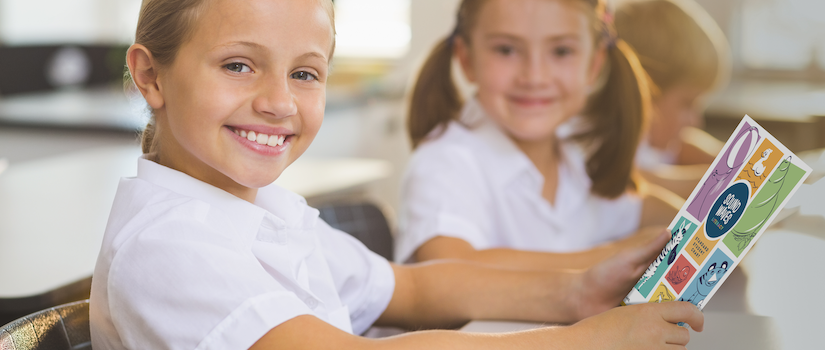Articles & Videos
Strengthen literacy skills with these four small-group games using Student Charts
Categories
Subscribe to our newsletters
Receive teaching resources and tips, exclusive special offers, useful product information and more!
Back to Research & Case Studies articles & videos
Strengthen literacy skills with these four small-group games using Student Charts
Sound Waves Literacy 7/10/25

We know teachers are always looking for opportunities to further engage students in learning tasks that help to consolidate lessons and address explicitly taught concepts.
So, we’ve gathered some of our favourite Sound Waves games that students can play in small groups using their Sound Waves Student Charts.
Category Chain
Players: Pairs
Aim of the Game: To identify the most words containing a given phoneme.
What You’ll Need: Student Charts (Foundation, Standard or Extended) – one chart per pair – and three counters per student.
How to Play:
- Ensure each student has three counters.
- Choose a broad category, e.g. food.
- Student 1 starts with the first Sound Box /b/ as in balloon and thinks of a word that contains the phoneme and belongs to the category, e.g. banana.
- Student 2 starts with the second Sound Box /k/ as in kite and thinks of another word that contains the phoneme, e.g. steak.
- Students continue alternating through the Sound Boxes and thinking of words that contain the phoneme and fit the category.
- Students must not say any words that appear as word examples on the chart itself. If a student cannot think of a word, they lose one of their counters. When a student loses all three counters, the other student wins.
Variation:
- For lower years students, remove the categories and simply use words that contain the phoneme.
- For upper years students, choose categories related to topics in other learning areas, e.g. countries.
Phoneme Chain
Players: Pairs
Aim of the Game: To say a word that starts with the final phoneme of the preceding word.
What You’ll Need: Student Charts (Foundation, Standard or Extended) – one chart per pair.
How to Play:
- Student 1 thinks of a word that starts with the first Sound Box on the chart, e.g. big.
- Student 2 identifies the final phoneme in the word and points to the Sound Box for that phoneme.
- Student 2 now thinks of a word that starts with the new phoneme, e.g. goat.
- Student 1 identifies the final phoneme in the word and points to the Sound Box for that phoneme.
- Students continue taking turns identifying phonemes and thinking of words.
Note: If a student is unable to think of a word that begins with the final phoneme of the previous word, allow students to point to a new Sound Box and come up with a new word so the game can continue.
Working with Graphemes
Players: Pairs
Aim of the Game: To think of words using a given phoneme.
What You’ll Need: Paper/notebooks, pencils and Student Charts (Foundation, Standard or Extended) – one chart per student.
How to Play:
- Student 1 chooses a phoneme, e.g. /ee/.
- Student 2 has one minute to write as many words as they can think of containing the phoneme (using the Student Chart as a handy prompt to think of different graphemes to represent the phoneme), e.g. sleep, honey, beach, reach, lady.
- Students score a point for each word they think of without using the example words on the Student Chart.
Alliteration Sentences
Players: Pairs
Aim of the Game: To compose sentences featuring a given phoneme.
What You’ll Need: Paper/notebooks, pencils and Student Charts (Foundation, Standard or Extended) – one chart per student.
How to Play:
- Student 1 nominates a phoneme and points to the corresponding Sound Box on their Student Chart, e.g. /f/.
- Both students compose sentences using as many words as possible that contain the nominated phoneme. The sentences must make sense, e.g. Four furry friends laughed around a fire.
- The student who has the most words with the nominated phoneme scores a point.
- The game repeats with Student 2 nominating a phoneme and pointing to the Sound Box on their Student Chart ready for both students to start composing sentences.